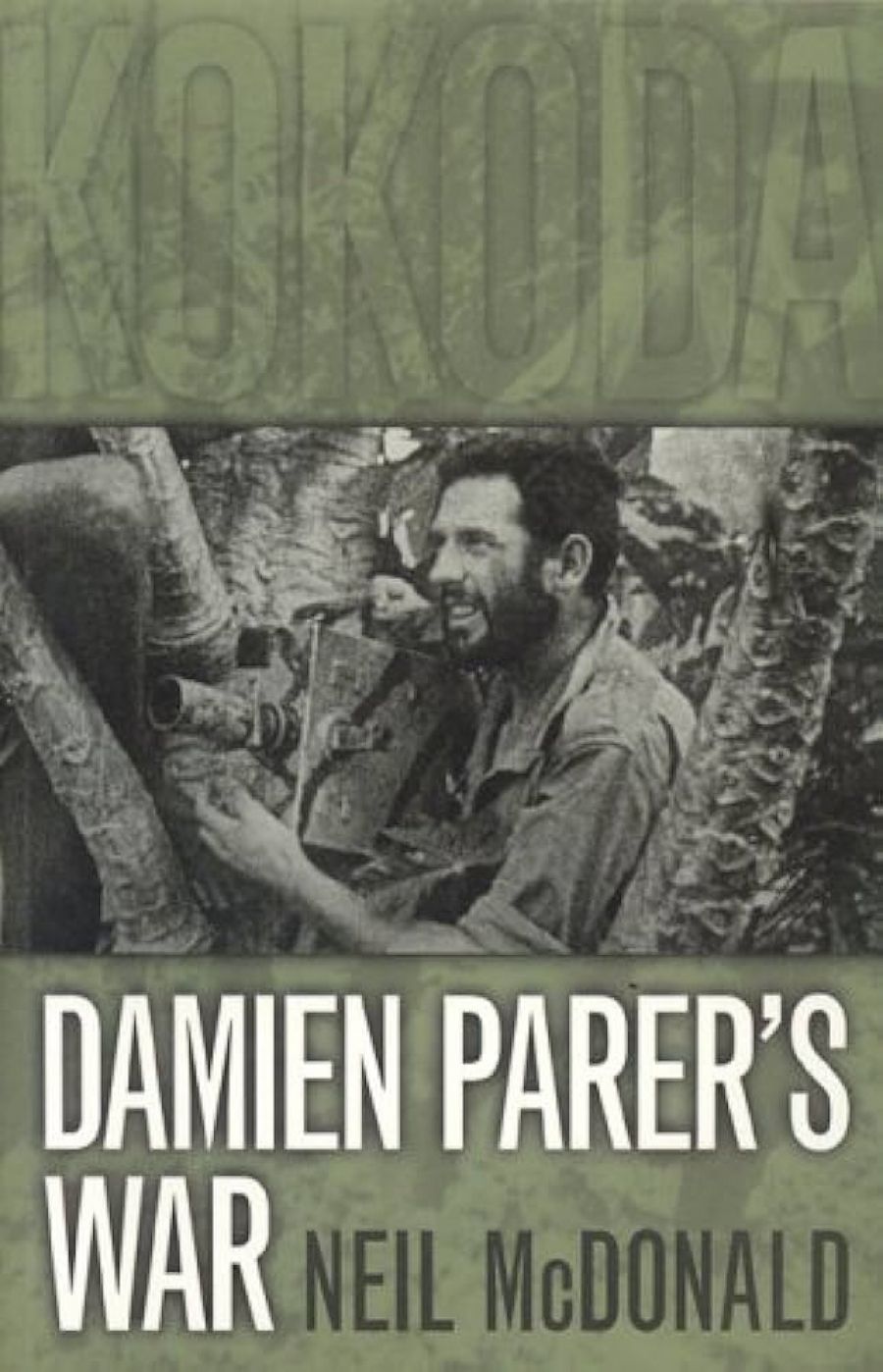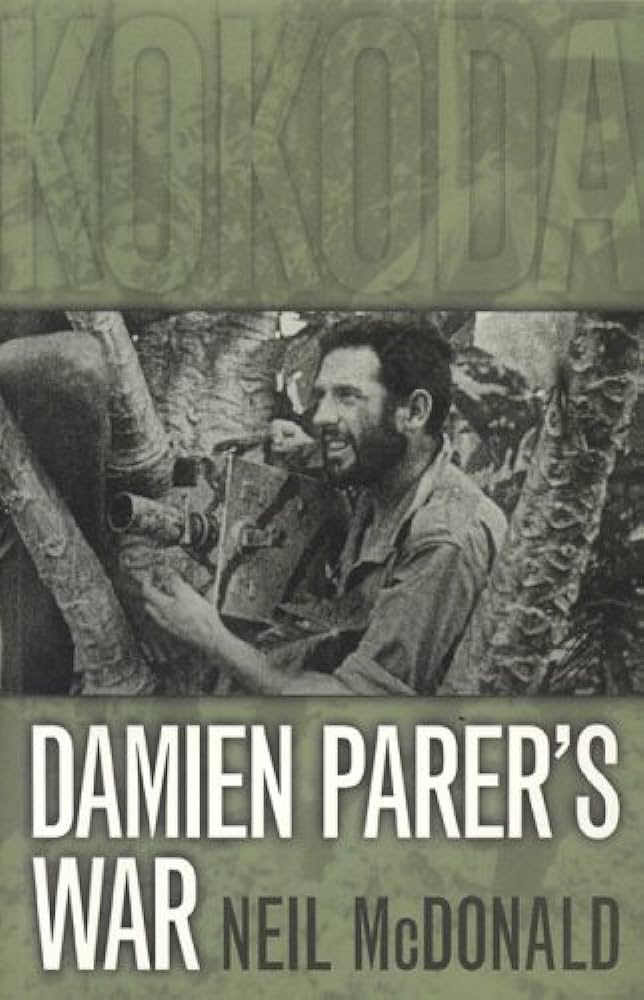
- Free Article: No
- Contents Category: Film
- Review Article: Yes
- Article Title: Standing Up
- Online Only: No
- Custom Highlight Text:
Writing of cinematographer Damien Parer’s untimely death in 1944, war correspondent Chester Wilmot paid tribute to him as ‘a fine man as well as a brilliant photographer. He made the camera speak as no other man I’ve ever known.’ Neil McDonald’s book, Damien Parer’s War, does eloquent justice to this legendary figure in Australian history and Australian film. Many may know that Parer was the first Australian to win an Oscar, but, unless they have read the 1994 edition of this admirable book, they may not know much else.
- Book 1 Title: Damien Parer’s War
- Book 1 Biblio: Lothian, $39.95 pb, 384 pp
- Book 1 Cover Small (400 x 600):

- Book 1 Cover (800 x 1200):

The earlier edition was called War Cameraman: The Story of Damien Parer; the new title seems more apt, given that the book’s focus is so solidly on those theatres of World War II in which he found himself, and how he conducted himself in them. McDonald offers a carefully researched, evocatively detailed account of the campaigns that constituted Parer’s war – the Middle East, the Western Desert, New Guinea, the South Pacific and so on – without letting the detail obscure the action’s main contours. The context for his achievement, often at peril to himself and at odds with bureaucratic parsimony, is vividly present, and the reader is made to feel what he found important to record.
Parer emerges above all as a sort of romantic hero: a good, brave, venturesome man, who took immense risks in the interests of his role as war cameraman; a loyal friend; a devout Catholic, who would kneel at prayer while all hell was going on around him. He seems never to have done anything worse than swear, and not very inventively either; and he works at expunging his anti-Semitism in the light of expanding experience. If he is the hero I’m claiming, then he is one who conjures up a bygone age, in his language, his attitudes to men and women, his religion and his morality. There is nothing prudish or pious about him, and his unaffected way of reporting people as ‘grand’ or ‘corker’, or the guileless use of now politically incorrect terms like ‘boong’, merely places him in time without diminishing his stature.
As a cameraman, he worked for the Department of Information, with which he had several run-ins on matters of stinginess and censorship; then with Paramount in the last part of his brief career. McDonald, with his grasp of film language, is wholly trustworthy about the technical aspects of Parer’s art, making his methods clear without, for the most part, clogging the narrative. Parer’s aim was always actuality, resorting to re-enactment only when there was no choice; early in his career, this brought him into conflict with famous World War I cameraman Frank Hurley. Circumstances once led Parer to dressing Australian troops in Japanese uniforms for the restaging of an ambush at Salamaua, New Guinea, but he was meticulous in recording on his ‘dope-sheets’ when filmed material was restaged. When this particular event was later included in his Oscar-winning Kokoda Front Line, he protested that it was treated as authentic action footage.
The danger inherent in the war cameraman’s lot is vividly rendered. There was no way in which he could provide the kind of visual commentary on the military actions that are the subject of his films without being exposed to the discomforts and risks faced daily by the serving men. Parer was interested in recording ‘the daily routine of soldiership’. This meant sharing the mud, heat, dysentery and enemy fire that were part of that routine. With No. 30 Squadron RAAF, it was one thing to film men working on the planes at base, another – and much more perilous – thing to share the dangers of combat flying, when ‘at least a pilot had his guns and could shoot back’, while Parer had only his camera. Elsewhere, filming infantrymen on the move, he would place himself and his camera between the men and the enemy, needing ‘to stand up when anyone with any sense would be lying down’. Ultimately, of course, Parer was killed while filming in action, at the age of thirty-two.
The book is, as its title indicates, the story of a man at war, but there is also a good deal else to be had from it. Parer’s early life as the youngest in a family of seven children born to Irish Teresa and the feckless Spanish gambler John Parer is adroitly sketched to provide a background for the kind of man Parer became. Mad about movies from an early age, he got work in Sydney with film-maker Charles Chauvel, including location shooting for Forty Thousand Horsemen, but the photographer Max Dupain, with his refusal to embrace a European ‘pictorialism’, was just as influential on the young Parer’s aesthetic.
Part of the book’s appeal is the way in which names (even that of Parer’s bête noir, Thomas Blamey), place names (Tobruk, Lae, Milne Bay) and antiquated slang (‘cobber’, ‘billyo’, ‘cracker’) fix like flies in amber the tumultuous period. And the brief poignancy of his marriage to beautiful Marie Cotter, who never married again after his death, ensures the potency of the legend.


Comments powered by CComment